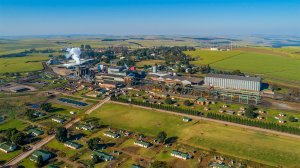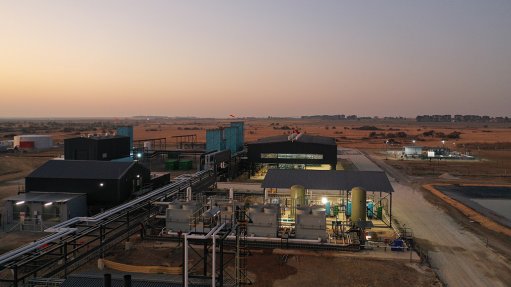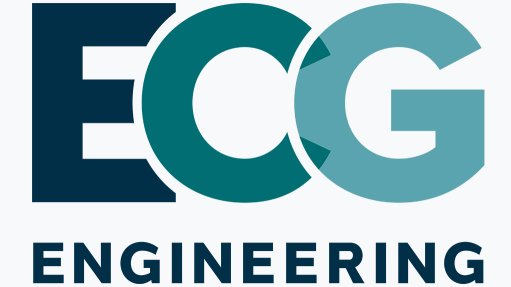Diversification said to be key to industry’s survival


FIELD OF DREAMS Flowing from Phase 1, at least ten product diversification opportunities have been identified and are being investigated in terms of viability
Despite Phase 1 of the “all-important” Sugarcane Value Chain Master Plan to 2030 (Sugarcane Master Plan) having expired on March 31, 2023, government has allowed for two additional years so that South African sugar industry players can restructure and diversify.
Sugar industry professional body the South African Sugar Association (SASA), government and other industry stakeholders have been working closely together to identify several potential diversification opportunities and explore their viability.
The Department of Science and Innovation, and the Industrial Development Corporation are providing financial support for the investigation of diversification opportunities for the sugar industry, as most projects are still at the scoping, market analysis and prefeasibility stages, says SASA executive director Trix Trikam.
“Flowing from Phase 1, at least ten product diversification opportunities have been identified and are being investigated.”
Sugar cane – being a flex crop – can be processed to produce a variety of other products, in addition to sugar. Some of the diversification opportunities being investigated include bioethanol for fuel blending, cogeneration, food additives and bioplastics, as well as sustainable aviation fuel.
“These opportunities have already been commercialised in other parts of the world, which reduces risk and strengthens hope that they could be localised successfully in South Africa,” adds Trikam.
The Sugarcane Master Plan was established to remedy, or relieve the sugar industry from ongoing negative impacts bestowed upon the industry following the introduction of the Health Promotion Levy (HPL), or Sugar Tax, in 2018.
The HPL resulted in the industry succumbing to substantial job losses, the closing of two sugar mills in KwaZulu-Natal (KZN), as well as a multibillion-rand revenue loss in sales.
These impacts had detrimental effects for rural and job-starved areas, such as KZN and Mpumalanga, where the sugar industry had previously supported 65 000 direct jobs and 270 000 indirect jobs. However, this was partially addressed through SASA’s establishment of the Youth Placement Programme (YEP).
“Since 2018, the Sugar Transformation Intervention Implementation Committee has been approving R5.2-million a year towards the YEP, which has become the industry’s flagship youth employment initiative,” enthuses Trikham.
The YEP initiative educates black youth members in various environments – such as the South African Cane Growers’ Association and South African Millers’ Association – enabling them to obtain two years’ worth of work experience, which is a prerequisite for the completion of diploma studies.
Despite various efforts by the local sugar industry to avert the negative impacts that resulted from the HPL, there has been limited success in improving the outlook.
Consequently, SASA – which has doubts about the commercialisation aspect of the existing diversification plans – calls on government to participate in a working partnership with the industry to help put it on the right trajectory and achieve the mission stipulated in the Sugarcane Master Plan.
“The industry is using the two-year moratorium to vigorously pursue diversification endeavours . . . our plea to government is that the Sugarcane Master Plan must also be afforded sufficient time to allow for the resolution of critical issues pertaining to HPL,” he concludes.
Article Enquiry
Email Article
Save Article
Feedback
To advertise email advertising@creamermedia.co.za or click here
Comments
Press Office
Announcements
What's On
Subscribe to improve your user experience...
Option 1 (equivalent of R125 a month):
Receive a weekly copy of Creamer Media's Engineering News & Mining Weekly magazine
(print copy for those in South Africa and e-magazine for those outside of South Africa)
Receive daily email newsletters
Access to full search results
Access archive of magazine back copies
Access to Projects in Progress
Access to ONE Research Report of your choice in PDF format
Option 2 (equivalent of R375 a month):
All benefits from Option 1
PLUS
Access to Creamer Media's Research Channel Africa for ALL Research Reports, in PDF format, on various industrial and mining sectors
including Electricity; Water; Energy Transition; Hydrogen; Roads, Rail and Ports; Coal; Gold; Platinum; Battery Metals; etc.
Already a subscriber?
Forgotten your password?
Receive weekly copy of Creamer Media's Engineering News & Mining Weekly magazine (print copy for those in South Africa and e-magazine for those outside of South Africa)
➕
Recieve daily email newsletters
➕
Access to full search results
➕
Access archive of magazine back copies
➕
Access to Projects in Progress
➕
Access to ONE Research Report of your choice in PDF format
RESEARCH CHANNEL AFRICA
R4500 (equivalent of R375 a month)
SUBSCRIBEAll benefits from Option 1
➕
Access to Creamer Media's Research Channel Africa for ALL Research Reports on various industrial and mining sectors, in PDF format, including on:
Electricity
➕
Water
➕
Energy Transition
➕
Hydrogen
➕
Roads, Rail and Ports
➕
Coal
➕
Gold
➕
Platinum
➕
Battery Metals
➕
etc.
Receive all benefits from Option 1 or Option 2 delivered to numerous people at your company
➕
Multiple User names and Passwords for simultaneous log-ins
➕
Intranet integration access to all in your organisation

















